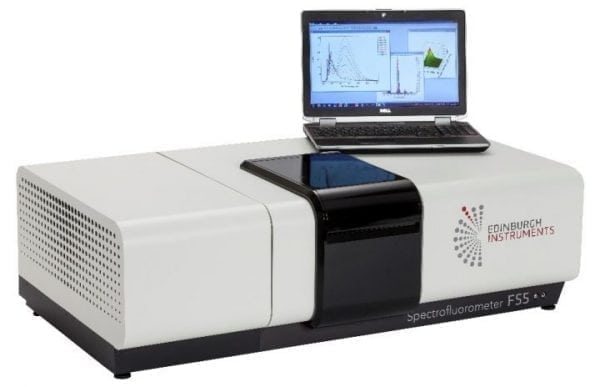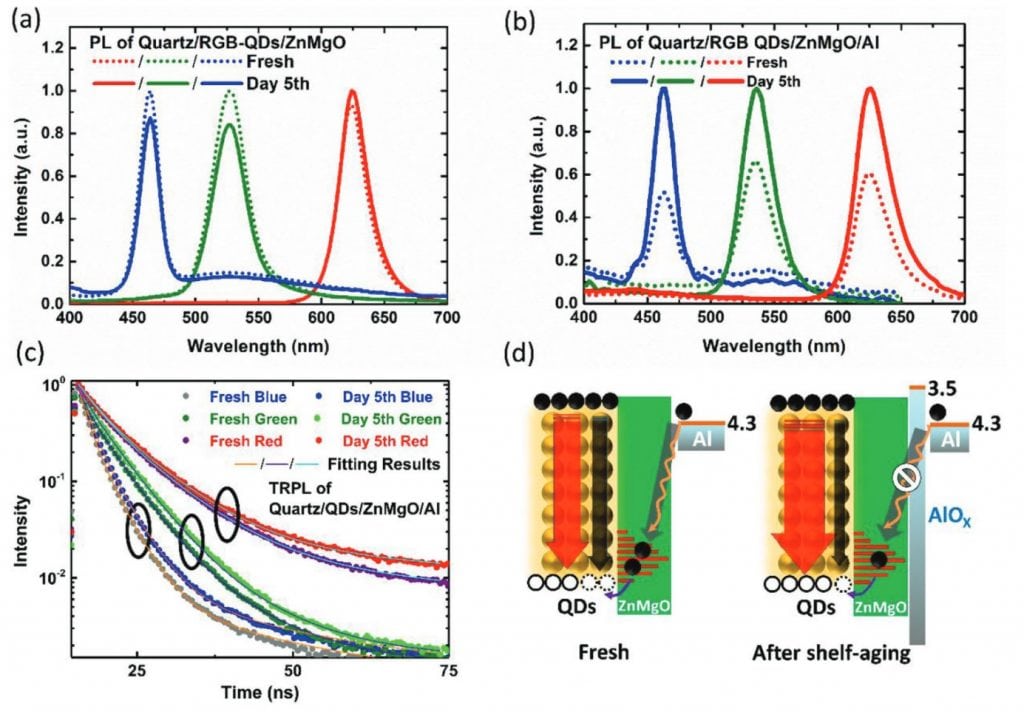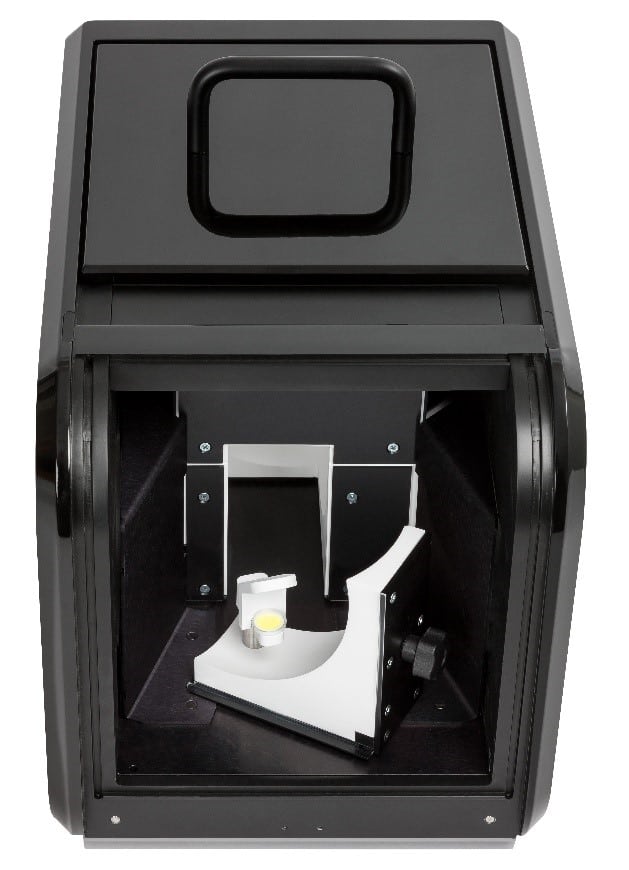Publication Highlight: Origin of Positive Ageing in Quantum Dot Light Emitting Diodes (QDLED)
Congratulations to our customer, Professor Shuming Chen and his research team at the Southern University of Science and Technology, Shenzhen for the acceptance of their paper “Origin of Positive Ageing in Quantum Dot Light Emitting Diodes (QDLED)” in Advanced Science.1
Prof. Chen’s research area involves the development of new, more efficient quantum dot light emitting diodes (QDLED). Quantum Dot LEDs are a promising LED technology for next generation displays due to their attractive optoelectronic properties and solution processability. In order to further improve the efficiency and stability of QDLEDs, the operating and ageing mechanisms in QDLEDs need to be better understood. Quantum Dot LEDs have previously been observed to exhibit a phenomena known as positive ageing, where the efficiency of the QDLED increases over a period of time after it has been fabricated.2 In this paper Prof. Chen’s team investigated the origin of this positive ageing mechanism with the aid of photoluminescence spectroscopy using an FS5 Spectrofluorometer equipped with an integrating sphere and TCSPC electronics.

They found that the positive ageing behaviour depended on the choice of metal for the cathode, with aluminium (Al) cathodes exhibiting the greatest positive ageing response. Using X-Ray Photoelectron Spectroscopy they showed that during QDLED ageing, a layer of AlOx formed between the Al cathode and the ZnMgO electron transport layer. Through current voltage characterisation they demonstrated that this AlOx layer improves electron injection into the QDLED which is one of the mechanisms responsible for the efficiency enhancement during positive ageing. In addition, they hypothesised that the AlOx layer may also supress exciton quenching during Quantum Dot LED operation. To investigate this hypothesis they used an Edinburgh Instruments FS5 Spectrofluorometer to measure the steady state and time-resolved photoluminescence from the QDLEDs.

Steady state photoluminescence (PL) spectra of the QDLEDs are shown in Figure 2 without (a) and with an Al cathode (b). To ensure that all PL emission from each QDLED was collected, the PL spectra were measured using the SC-30 Integrating Sphere Module for the FS5 (Figure 3, below), which allows the PL emission intensity of the various QDLEDs to be accurately compared. It can be seen from Figure 2a that in the absence of the Al cathode the PL intensity either decreases or is unchanged after 5 days of ageing. Contrast this to Figure 2b where the PL intensity is significantly increased after the ageing, which supports the hypothesis that the AlOx layer supresses exciton quenching and increases the radiative efficiency of the QDLED.
In order to further support this argument, the PL decays of the Al cathode QDLEDs were measured on the FS5 using Time-Correlated Single Photon Counting (TCSPC) as shown in Figure 2c. The PL decays were fit with a three component exponential and the weighted average lifetime of the decay calculated. The PL lifetimes of the blue, green and red QDLEDs increased from 3.68, 4.87 and 9.12 ns to 4.30, 5.31 and 10.26 ns after 5 days of ageing. The enhancement in PL intensity together with this enhancement in PL lifetime confirms that that the presence of the interfacial AlOx layer supresses exciton quenching and enhances the radiative efficiency of the QDLEDs.
The mechanism proposed for this enhancement by Prof. Chen’s team is illustrated in Figure 2d. In fresh QDLEDs, electrons migrate from the Al cathode and become trapped in the ZnMgO layer and these trapped electrons can quench the excitons inside the QDLED and reduce the radiative efficiency. In aged QDLEDs an AlOx interfacial layer is formed which blocks the migration and trapping of the electrons. The reduction in trapped electrons suppresses the exciton quenching, resulting in an enhancement to the radiative efficiency and improved QDLED performance.
Download the full paper: Origin of Positive Ageing in Quantum Dot Light Emitting Diodes (QDLED).
References
- Q. Su, Y. Sun, H. Zhang, S. Chen, Origin of Positive Ageing in Quantum‐Dot Light‐Emitting Diodes, Adv. Sci. 1800549 (2018)
- K. P. Acharya, A. Titov, J. Hyvonen, C. G. Wang, J. Tokarz, P. H. Holloway, High Efficiency Quantum Dot Light Emitting Diodes from Positive Ageing, Nanoscale, 9, 14451 (2017)
Fluorescence Spectroscopy Instrumentation
For further information about Quantum Dot LEDs or our range of fluorescence spectroscopy instrumentation or to find out how they can be used for your own research into quantum dot light emitting diodes, please contact us. We’d be delighted to help.
Stay In Touch
Stay up-to-date with the latest news, applications, and product information from Edinburgh Instruments by following us on social media, and sign-up to our infrequent newsletter via the red sign-up button below.









